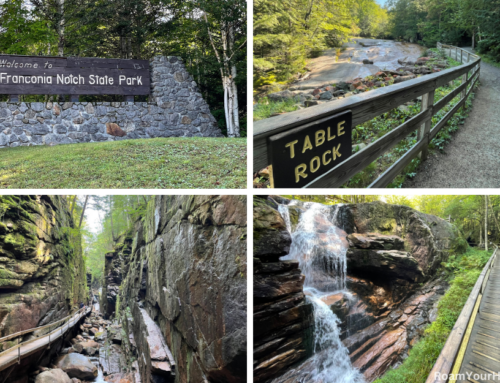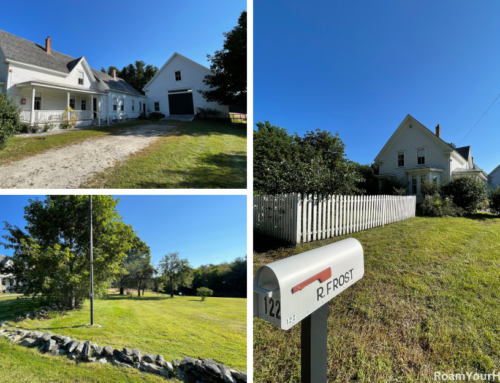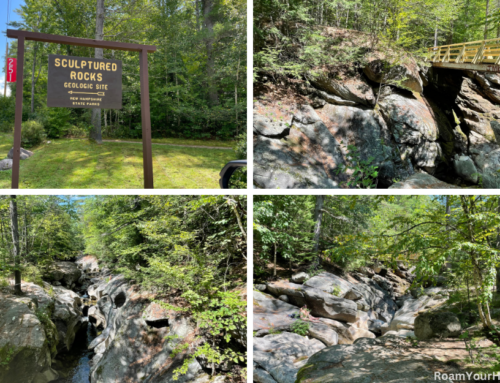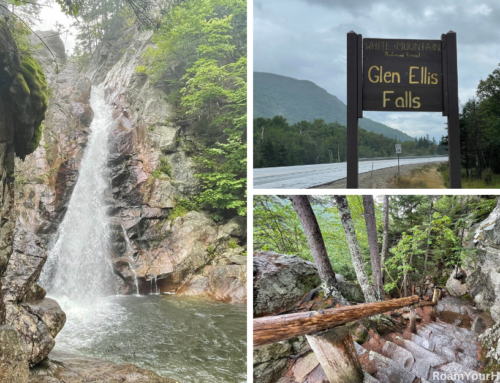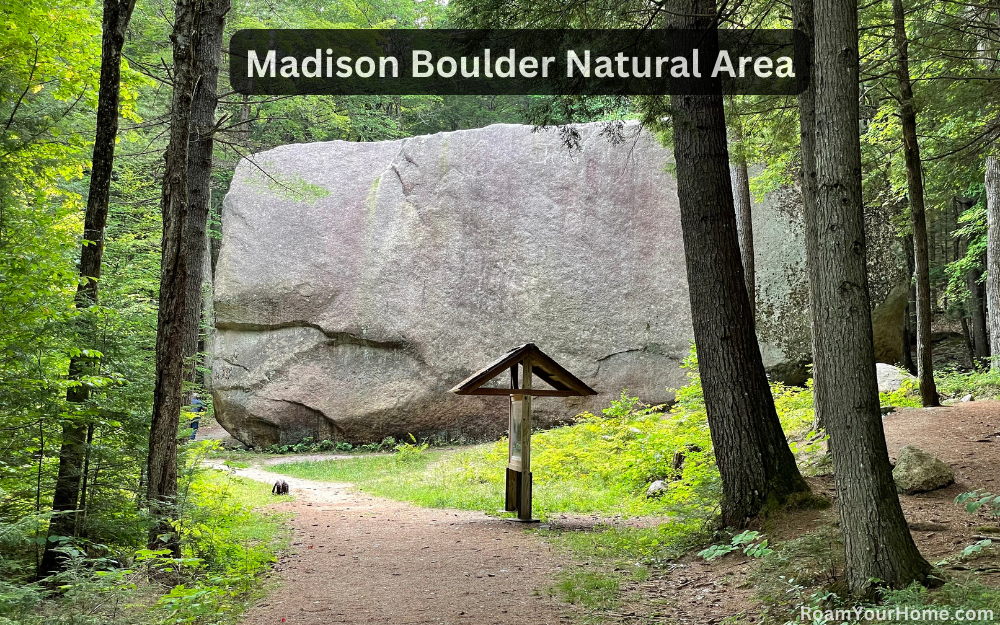
Why to check out the Madison Boulder Natural Area
That is one gigantic rock! That was our first impression when we visited the Madison Boulder Natural Area in rural New Hampshire. “It’s bigger than our house,” said my wife in disbelief. She had been skeptical about driving 20 or so miles out of our way to see a big rock.
The Madison Boulder is off the beaten path, about 2 hours north of Manchester, New Hampshire, and roughly an hour and a half northeast of Portland, Maine. If you live near Boston, you can be there in about two and a half hours, still making a very doable day trip. It’s located near Madison, New Hampshire, named after President James Madison.
Few people know about the Madison Boulder Natural Area. When we visited, we only saw a couple of other folks. But even though it’s not well known, it is worth visiting. In 1970, Madison Boulder was declared a U.S. National Natural Landmark because the enormous rock “is an outstanding illustration of the power of an ice sheet to pluck out very large blocks of fractured bedrock and move them substantial distances.”
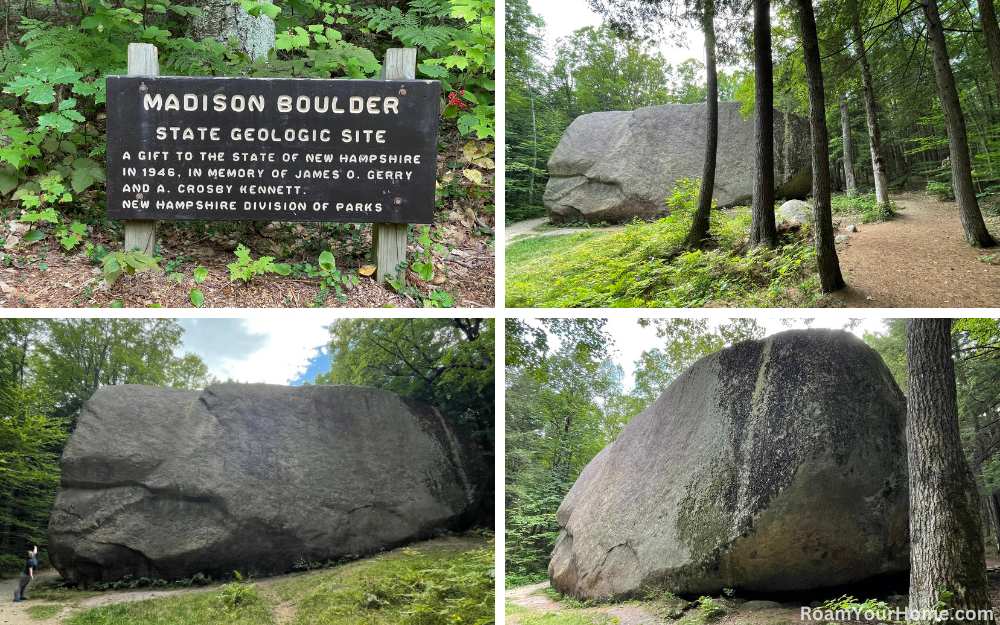
How big is the Madison Boulder
The Madison Boulder is the largest known glacial erratic in North America. Glacial erratics are stones or boulders moved by a glacier and left behind when the glacier melted. The Madison Boulder is massive! The chunk of granite is 83 feet long, 23 feet tall above the ground, 37 feet wide, and weighs roughly 6,000 tons! Approximately 10 to 12 feet of the rock is buried underground.
There is a small dirt parking lot at the trailhead to the boulder. It’s a short walk back to it. The entire natural area is only 17 acres. There are no services in the natural area; just a heads up. So, plan on packing out your trash. We recommend packing a little picnic and enjoying a snack at the boulder. It’s the perfect place to relax and take in the power of Mother Nature.

